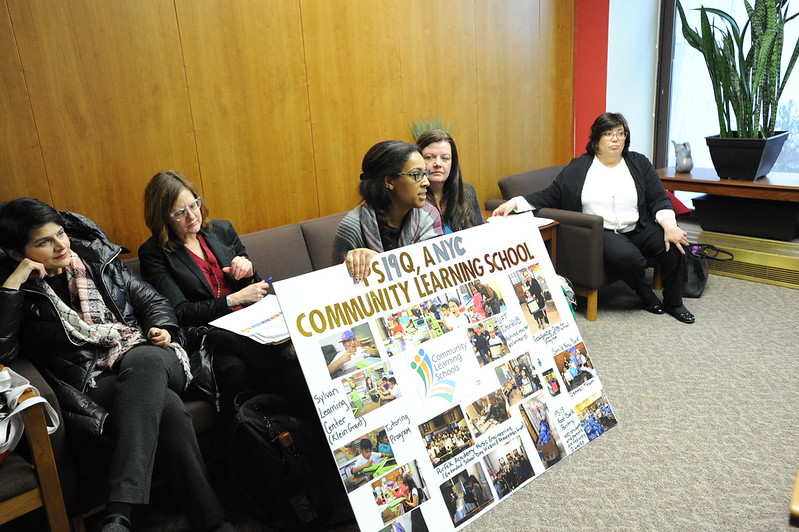Savanity Davis, director of PS19’s UFT Community Learning School, knows what the kids need to succeed: tutoring, dental and health care, healthy food, violence prevention and even music in their lives. At the school on 99th and Roosevelt in Queens, they can get it.
Sometimes a regular dental check-up reveals that a child can’t pay attention because he or she has severe teeth problems, Davis said. “We had one child who had a broken jaw,” she said, but nobody knew it until the dentist did an exam.
In a school with many English-language learners, extra assistance must be part of the fabric of the school programs to help the kids catch up to grade-levels before it is too late. And, we all know, hungry students will never reach their potential.
Davis and other UFTers joined a phalanx of school- and health-based agencies for a Community Schools Advocacy Day in Albany Tuesday to make the case for maintained and expanded state aid in the 2018-19 state budget due April 1.
What are community schools? Community schools offer built-in opportunities and supports to give students and parents all the tools they need to learn and grow. In a comprehensive, holistic approach, communities and schools leverage their shared physical and human assets to help kids succeed.
But they are all different, because they reflect their own environments.
“There isn’t a cookie-cutter community school,” said Sarah Murphy of the New York School Based Health Alliance. “You need someone on the ground to respond to local needs and to help those kids to thrive.”
Most traditional schools can’t address these needs beyond classroom instruction, said Bridget Rein of the UFT. Community schools do.
“We provide a service to the community,” Rein said. “It’s like having a community board in your school. Every school in New York City needs to be a community school. This is a model that works.”
The Community Schools Network Advocacy Day asked lawmakers to:
- Maintain $300 million in existing funding.
- Support the governor’s proposed $50 million increase; however they asked for new funding to aid additional districts currently not in the set aside.
- Support the executive proposal to include $1.2 million for three Community Schools Regional Technical Assistance Centers to assist districts establishing or operating community school, and to add $415,550 to allow centers to expand this crucial service.
Photo Gallery
